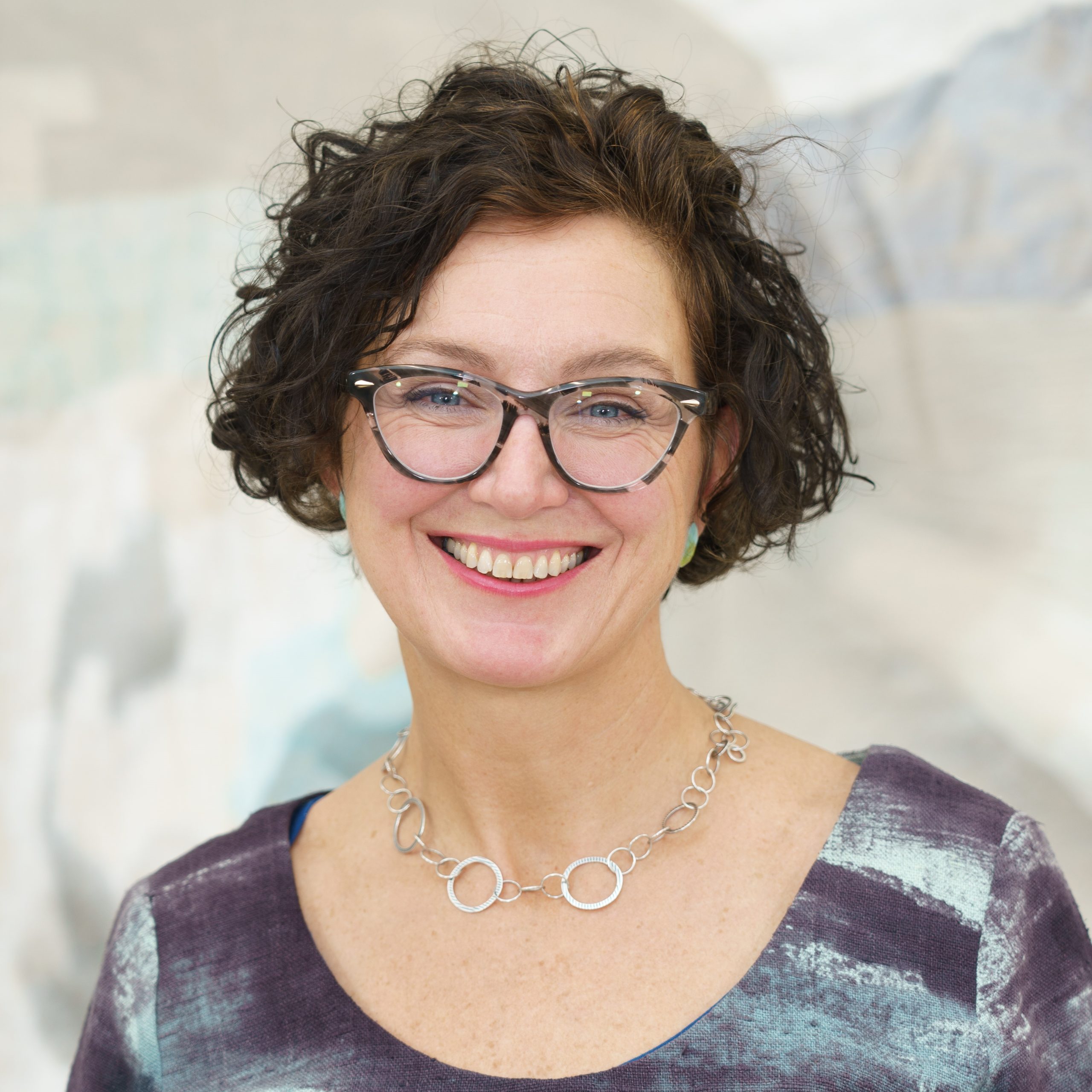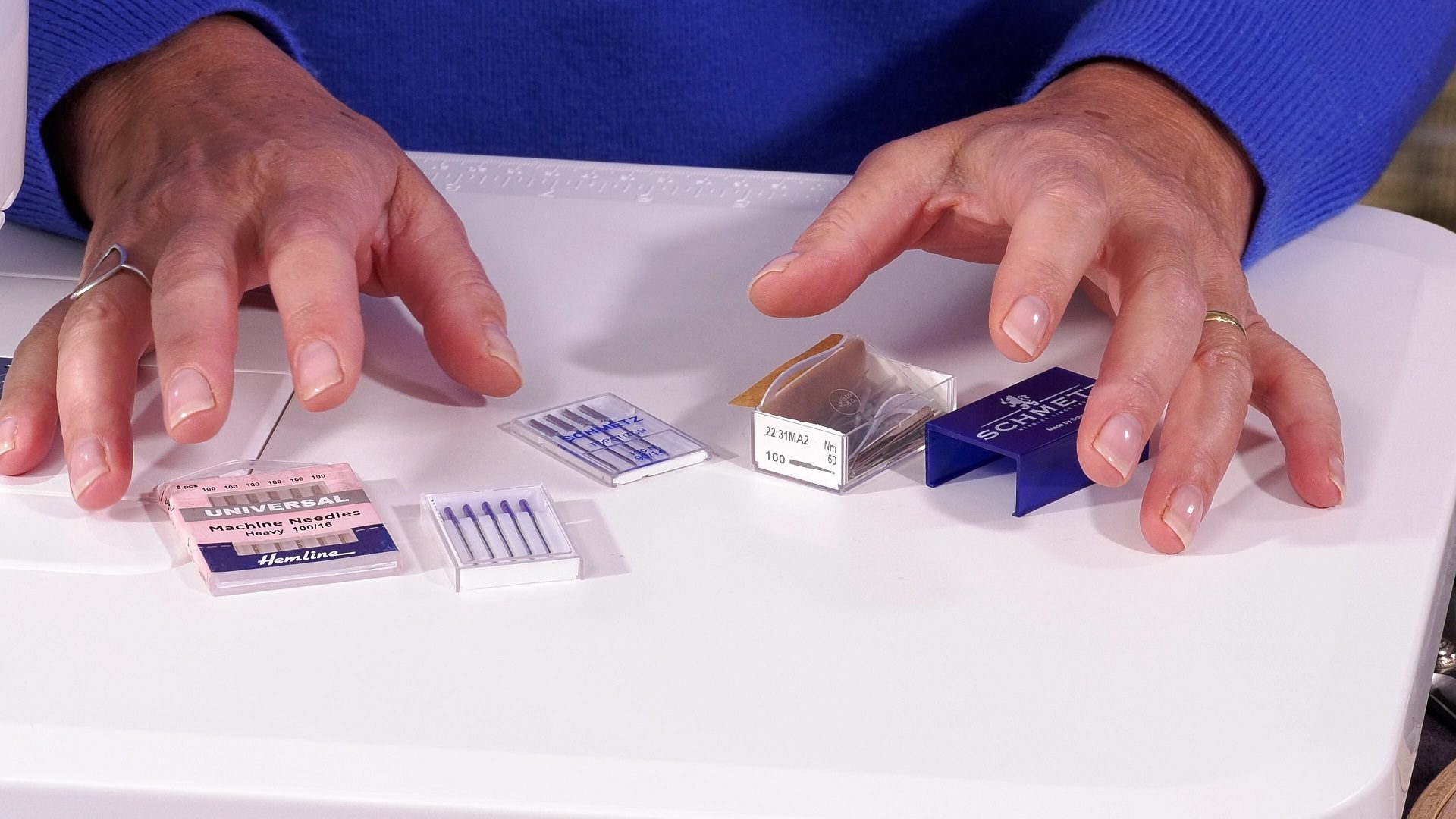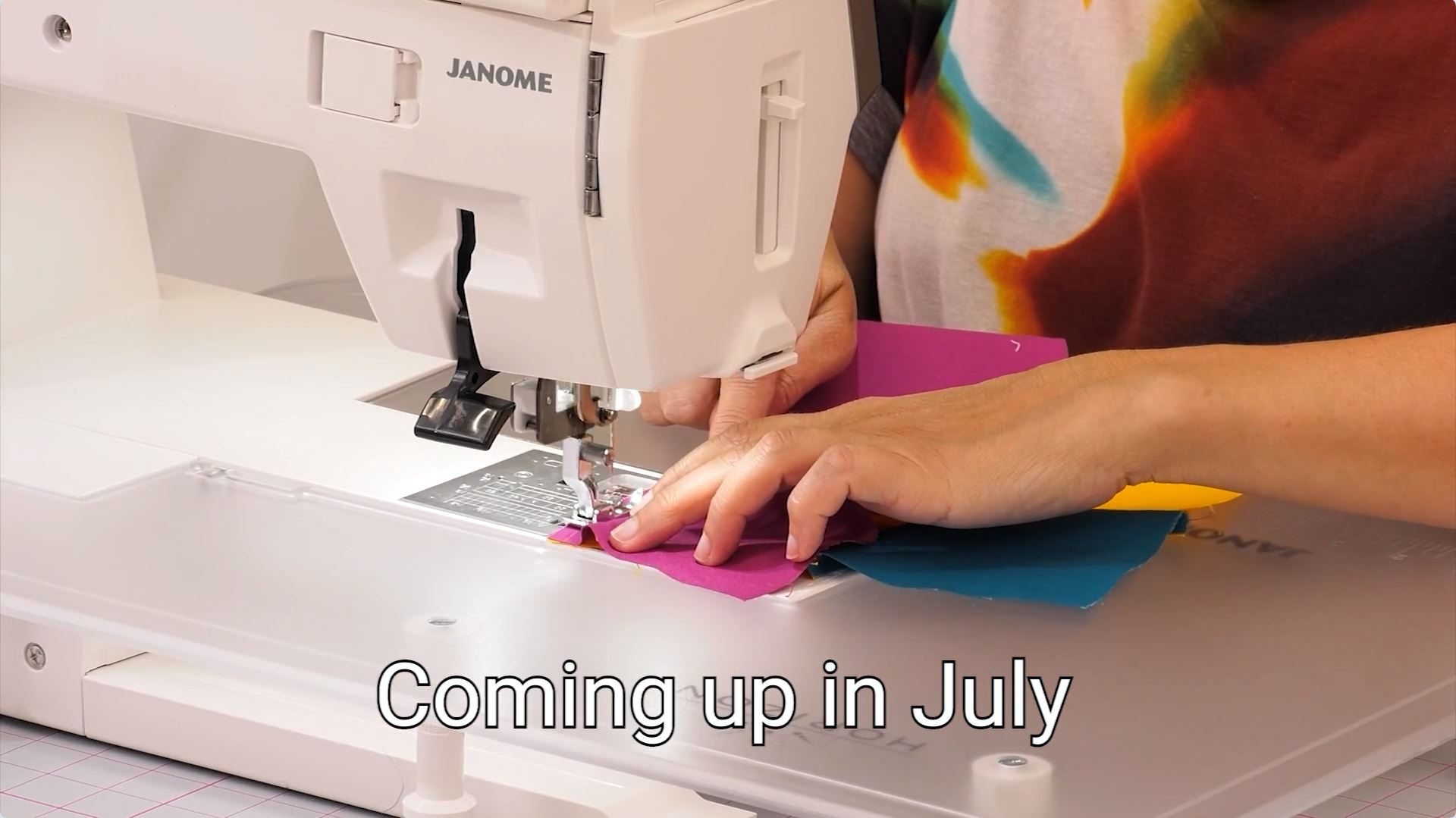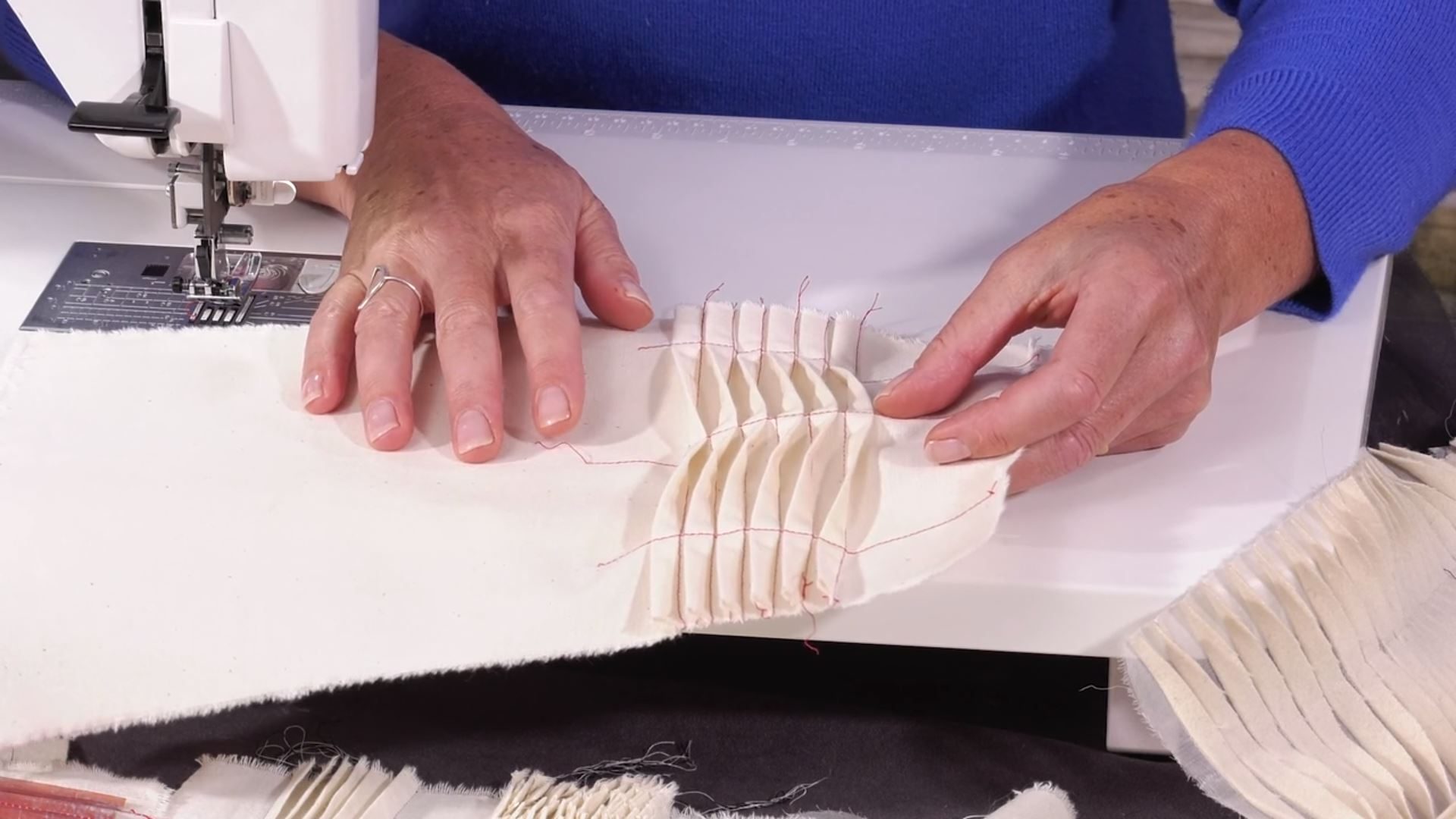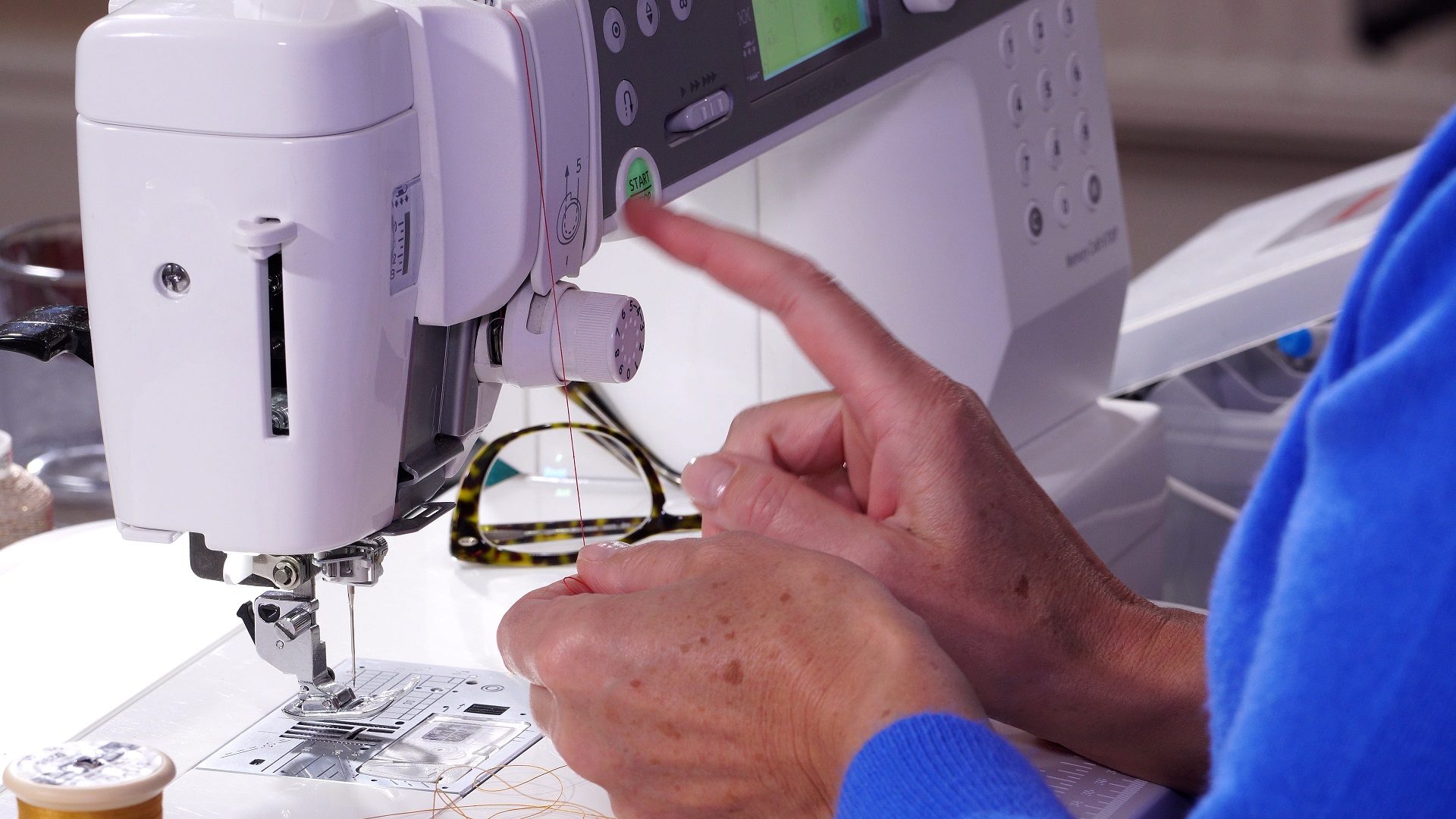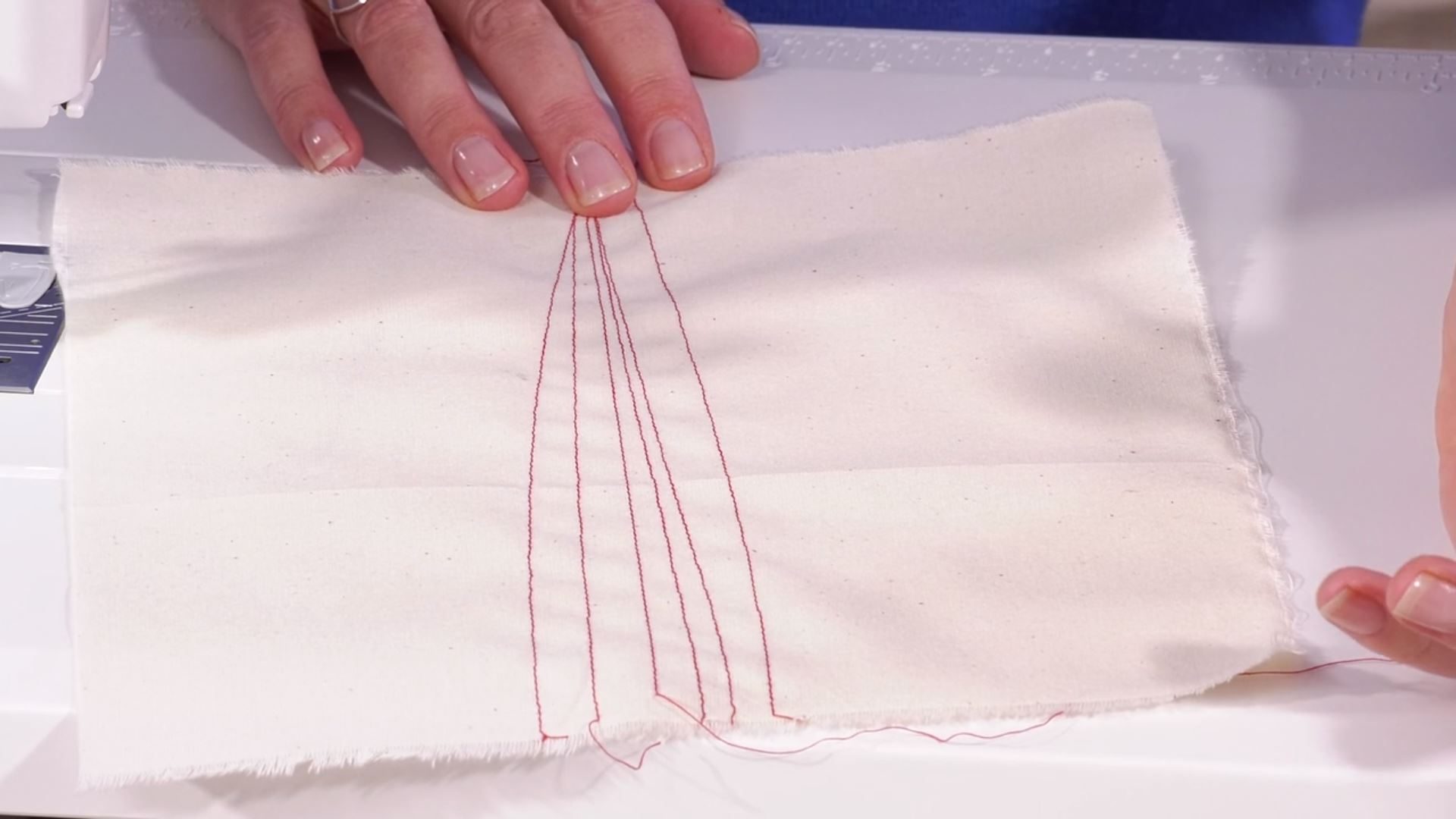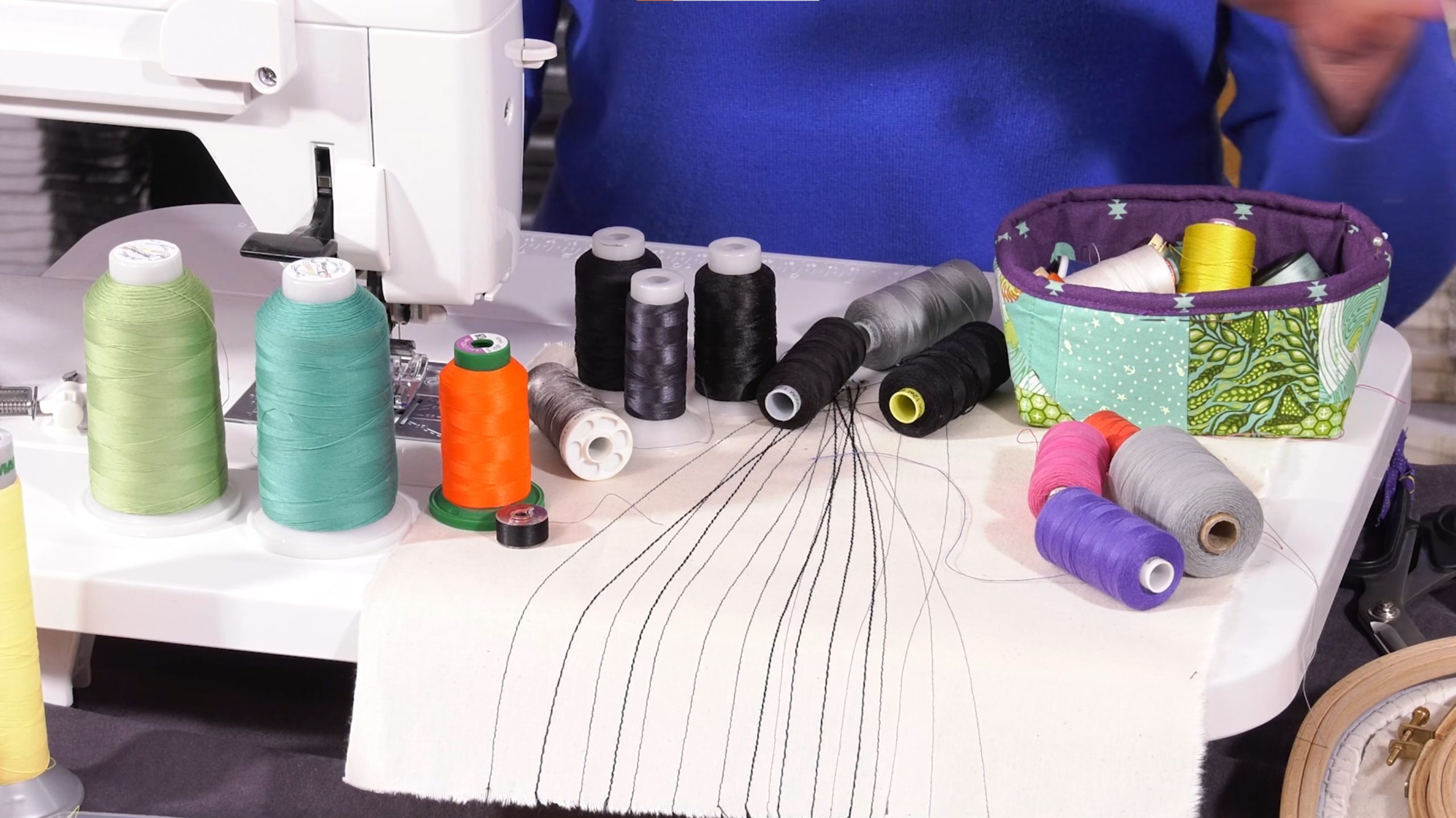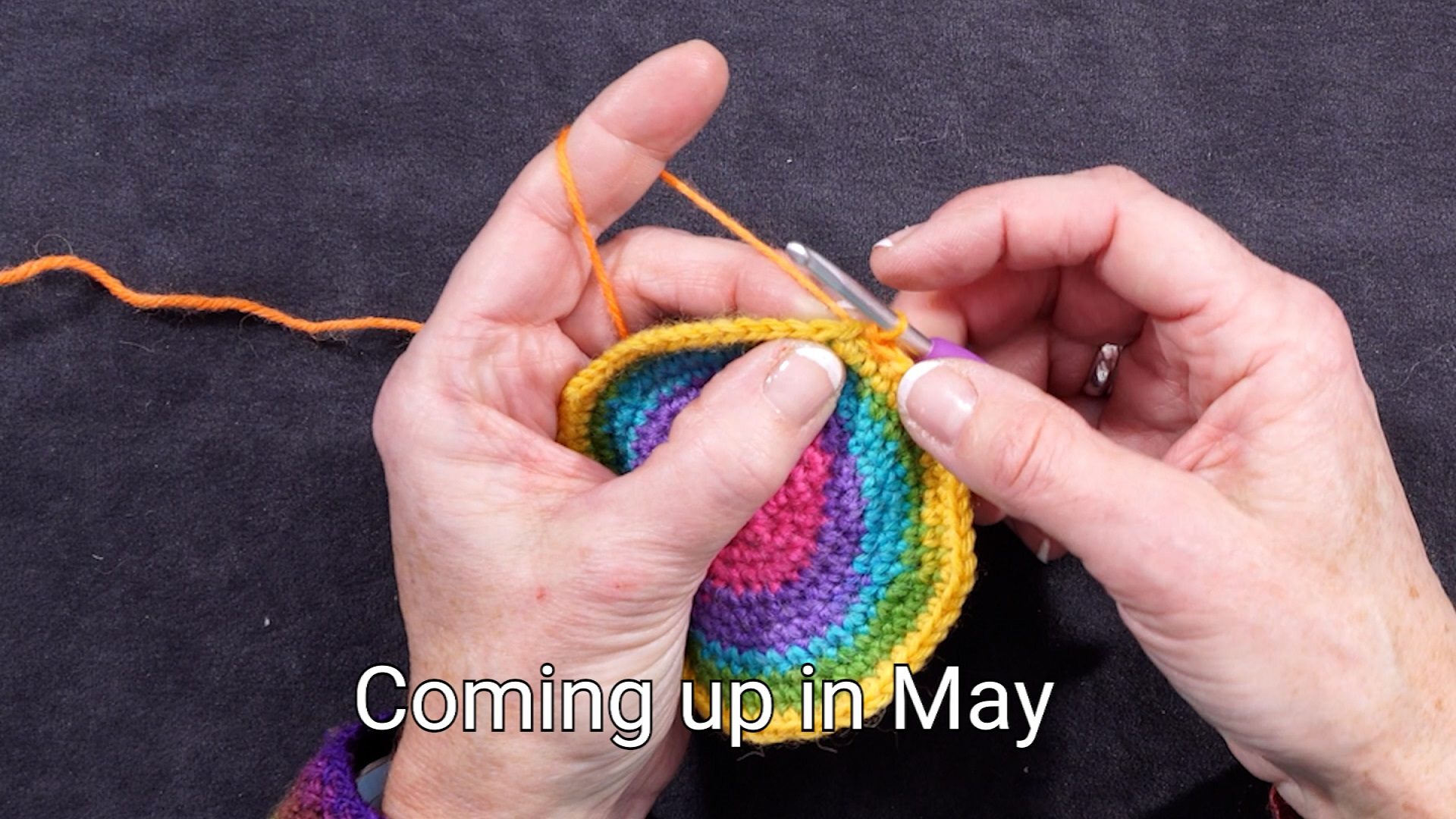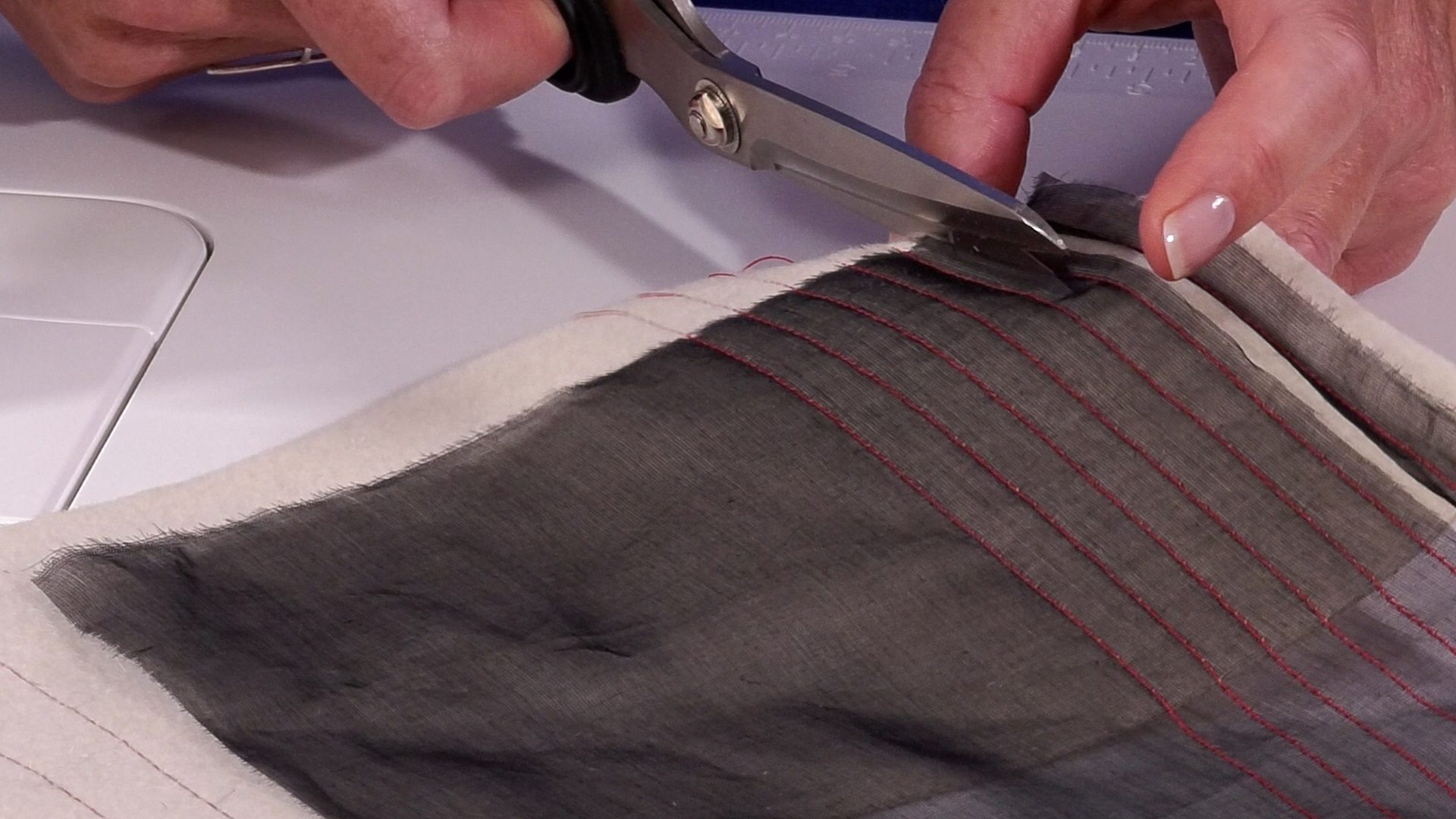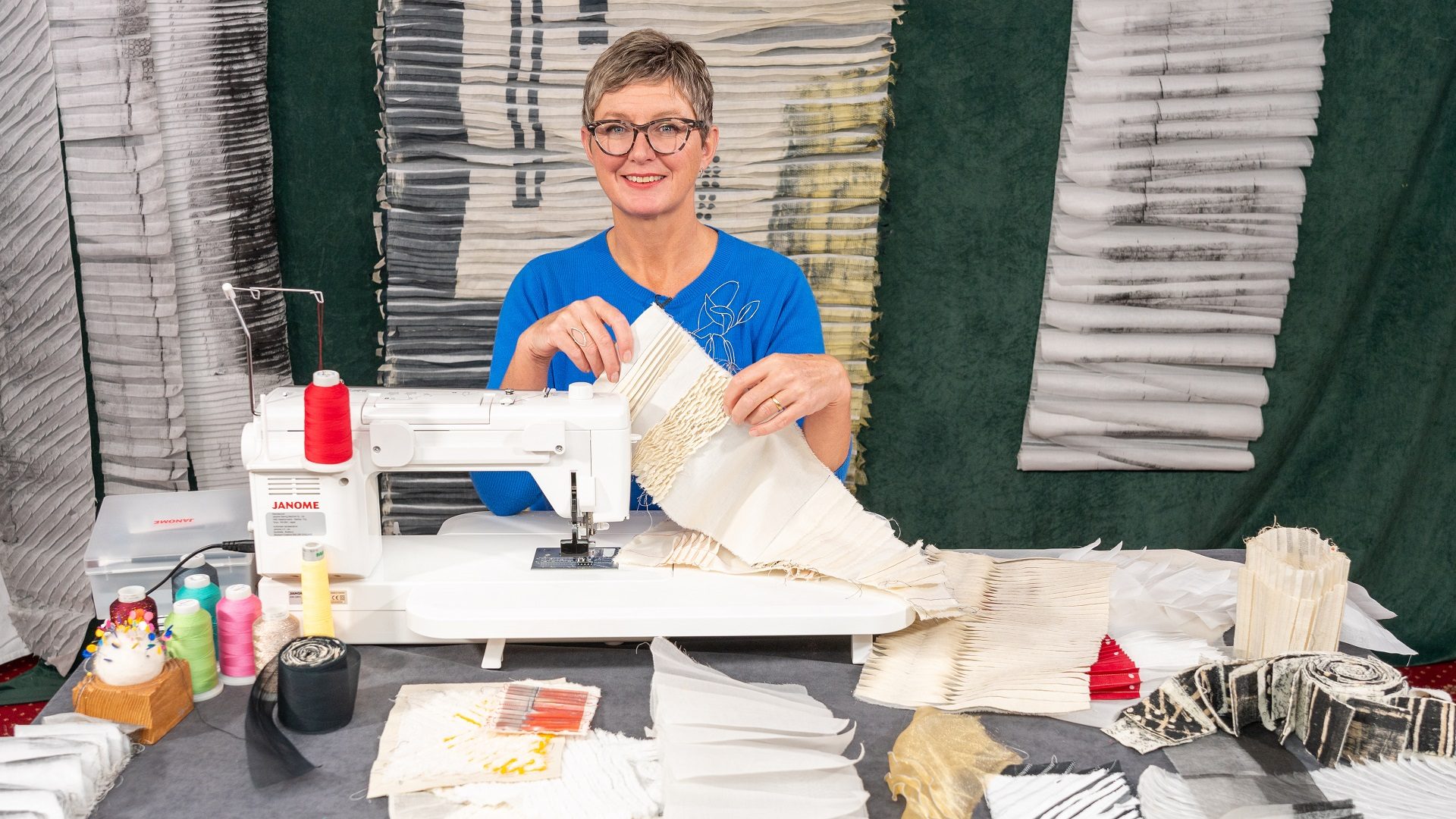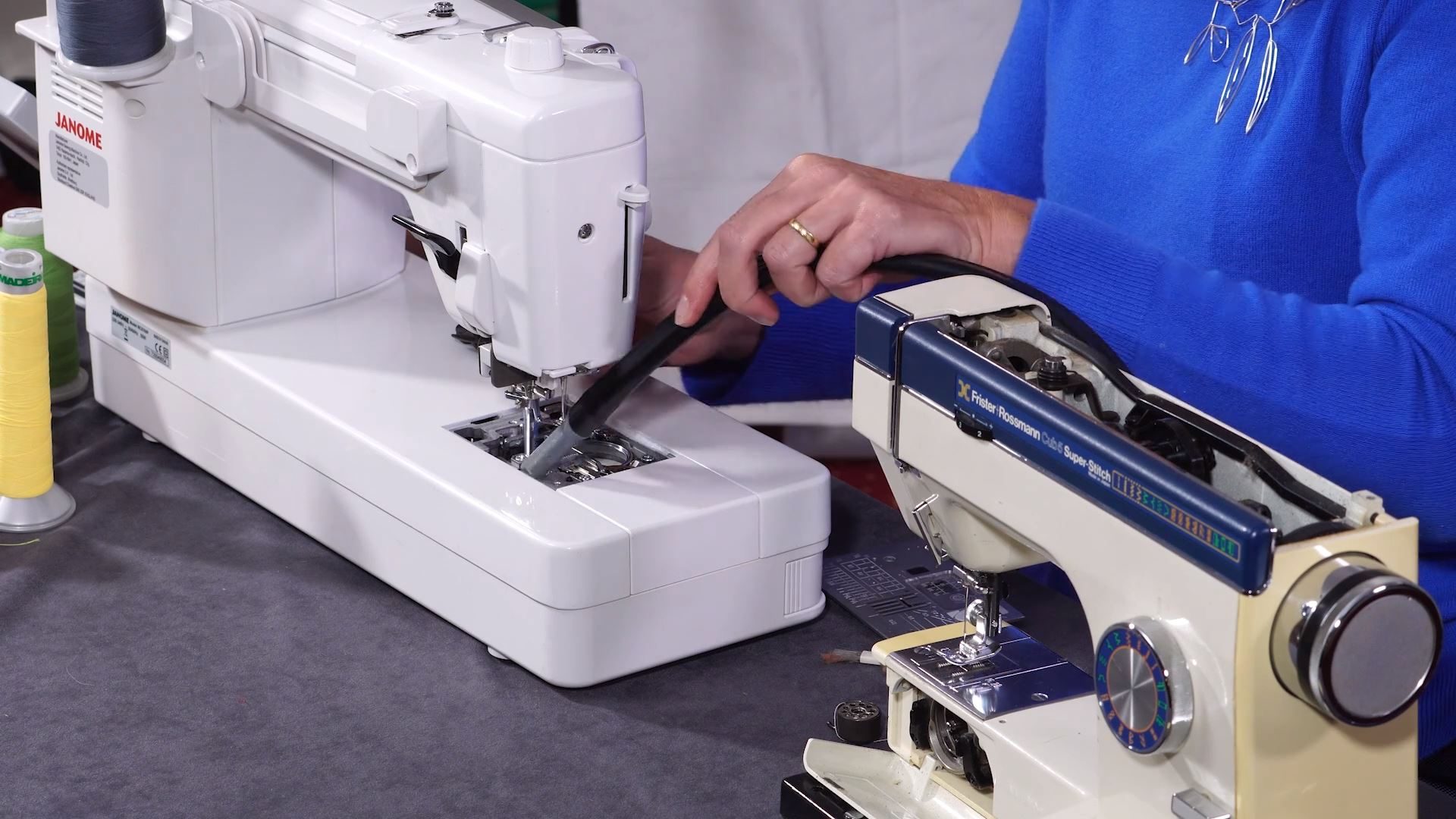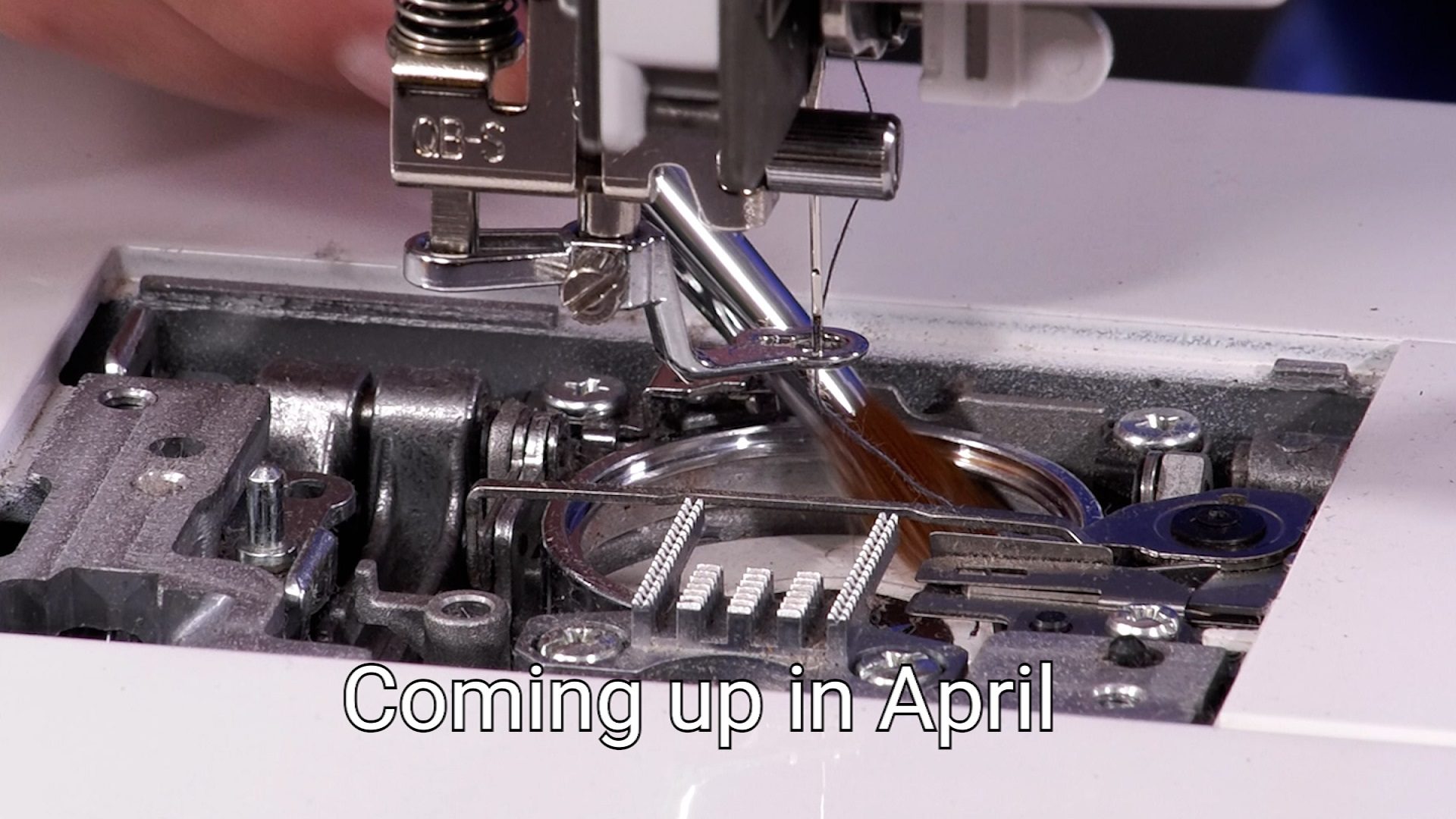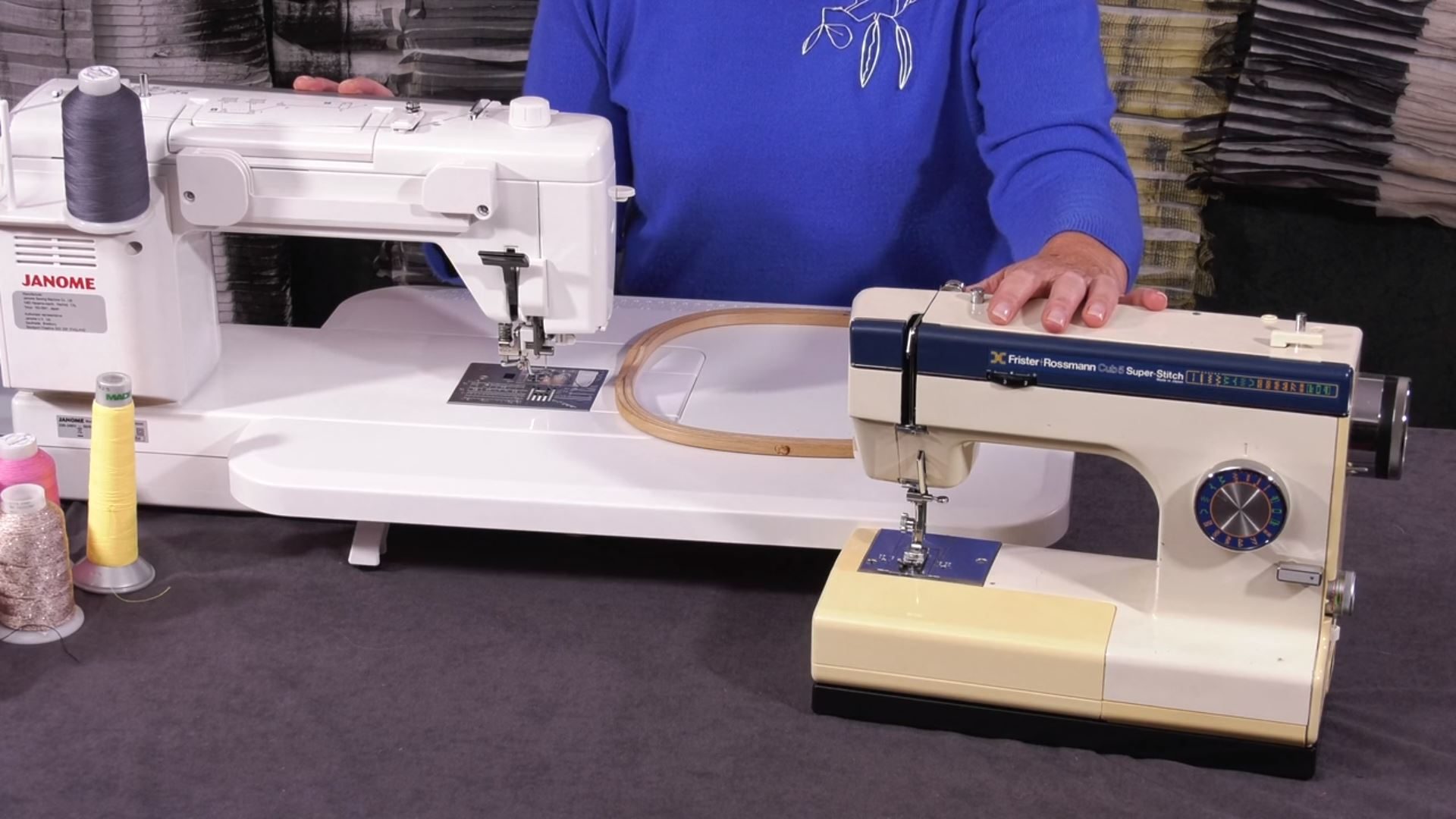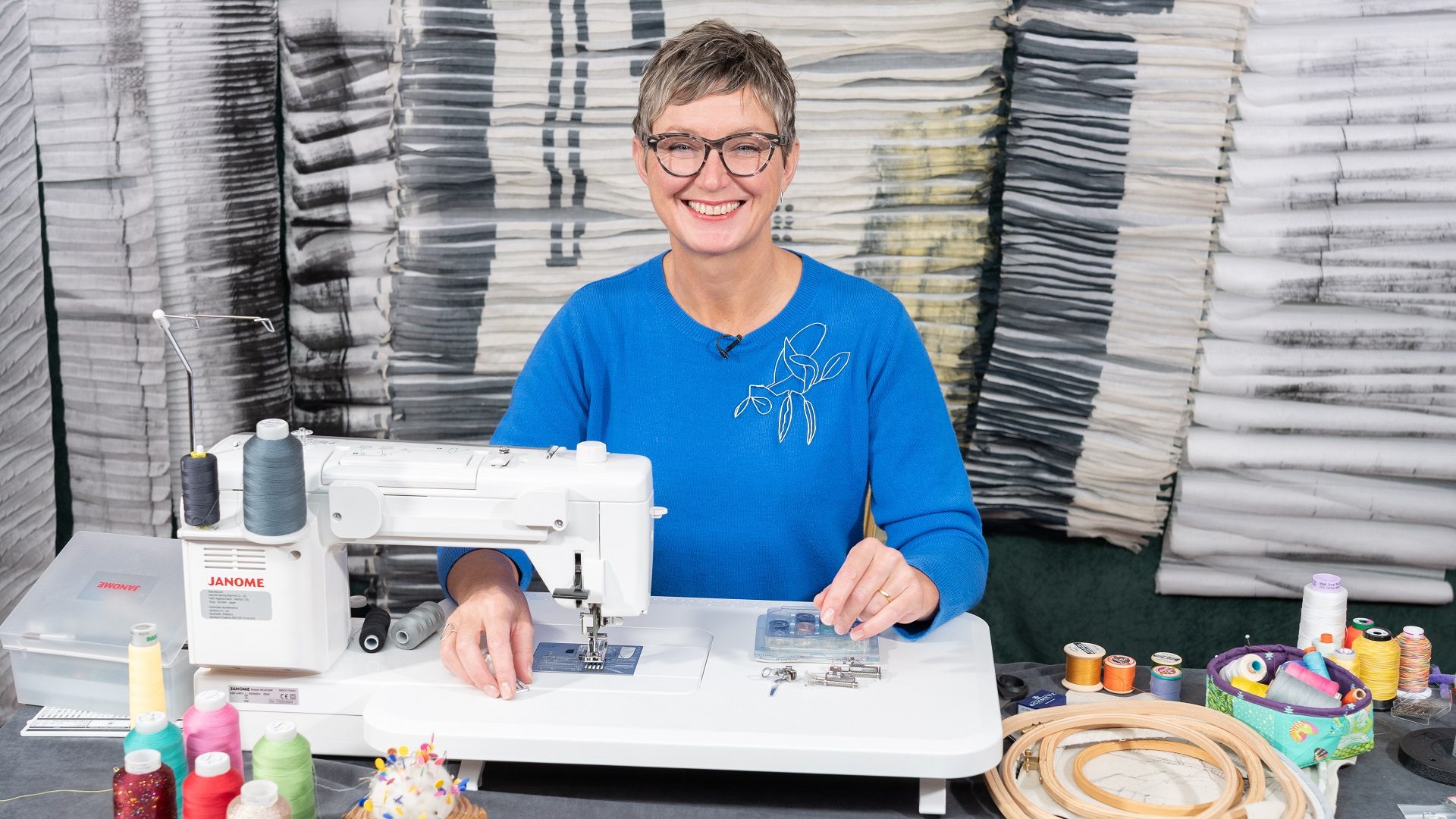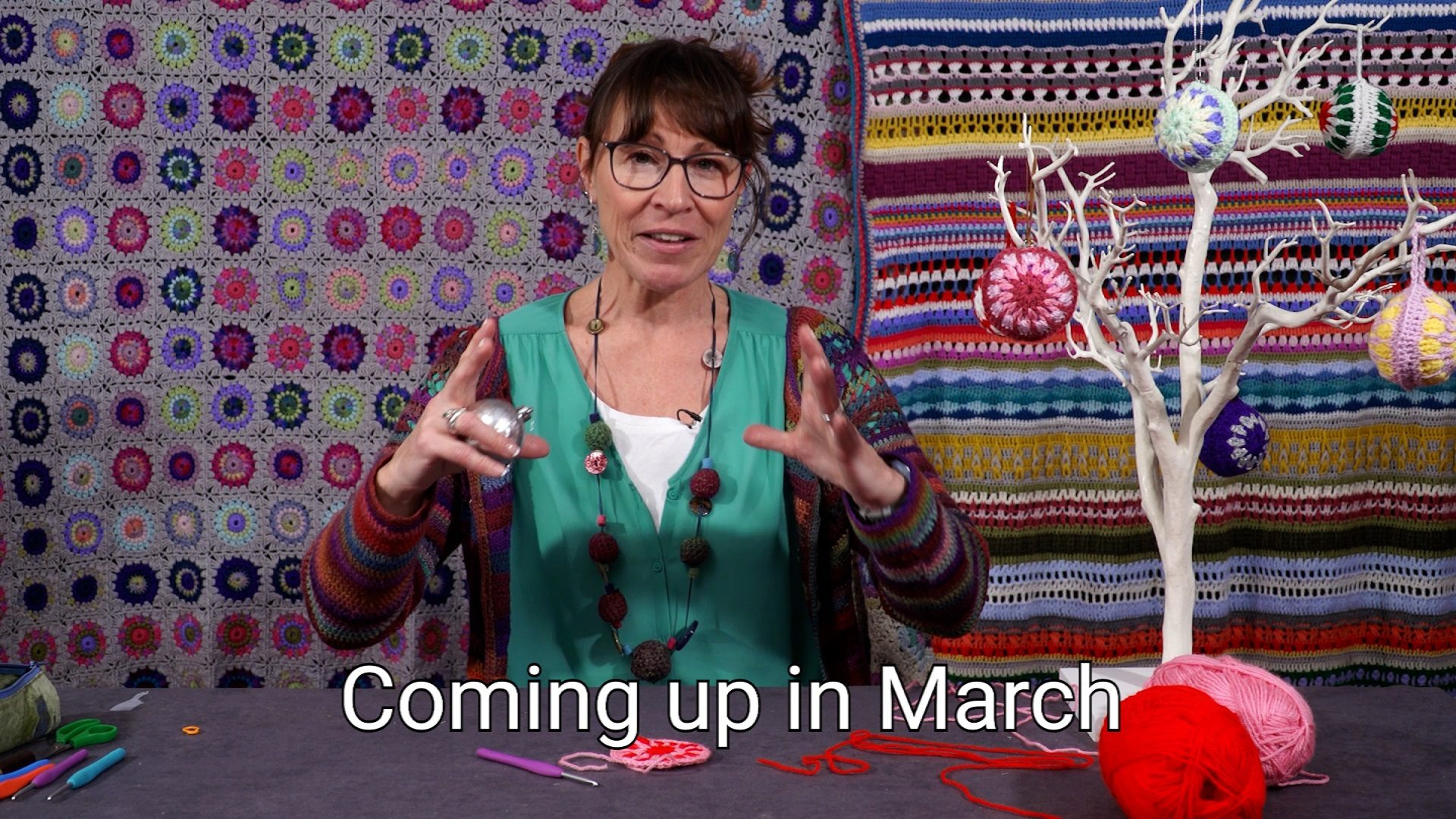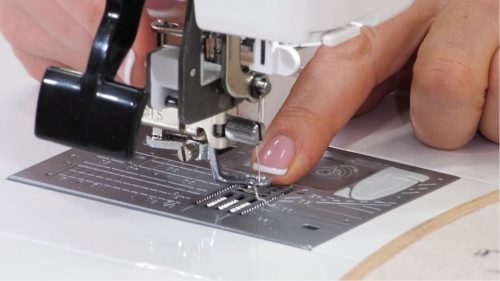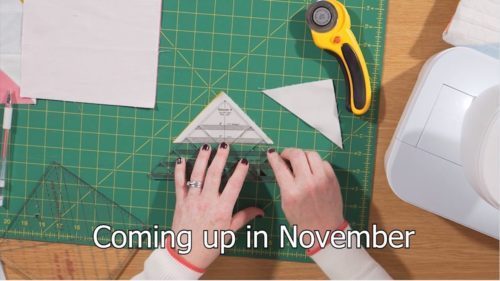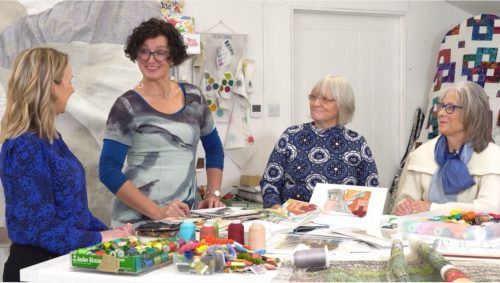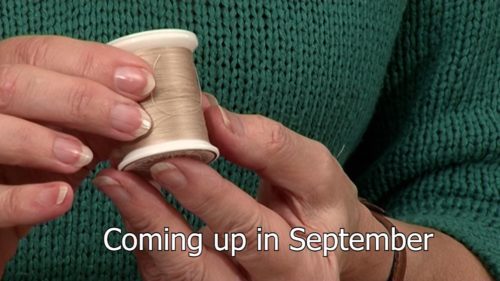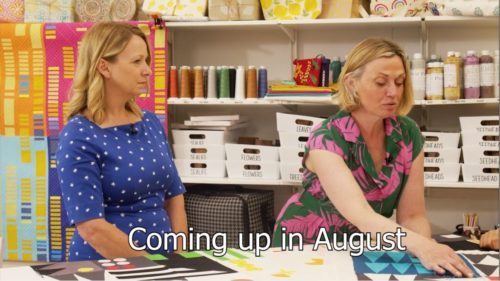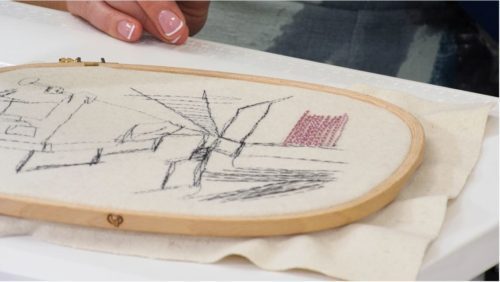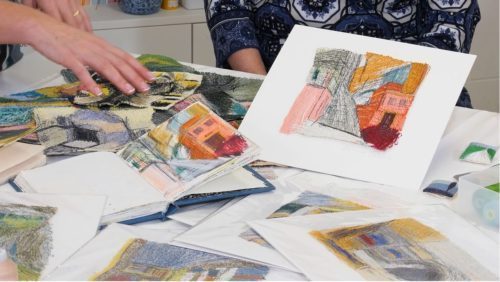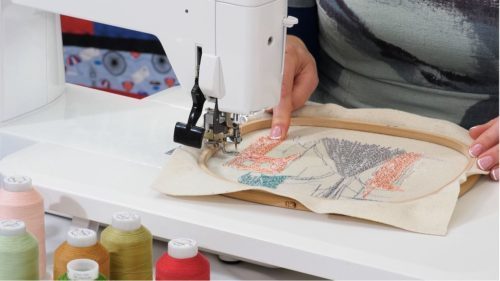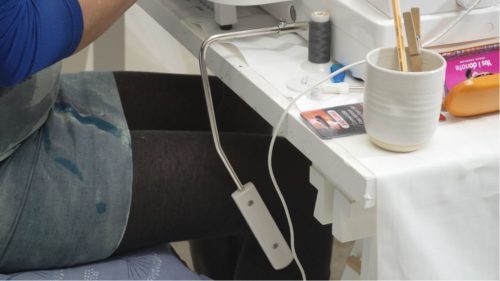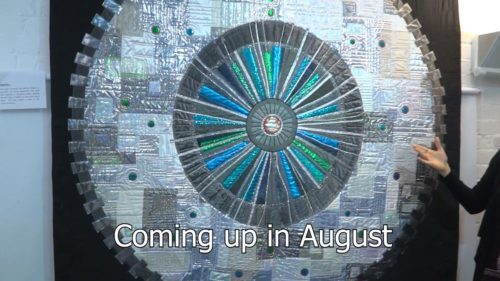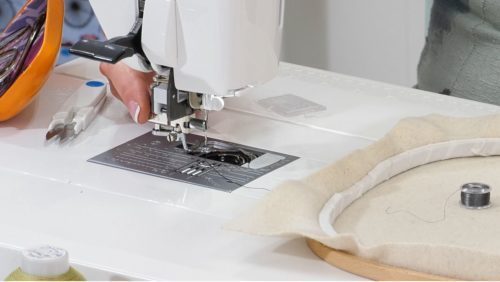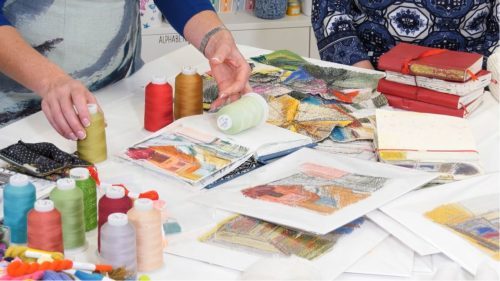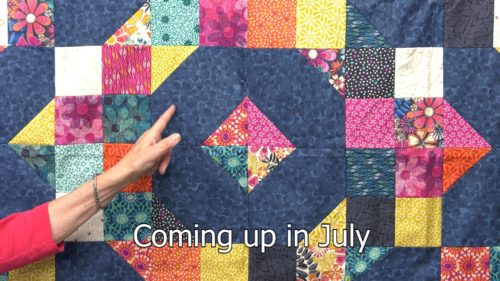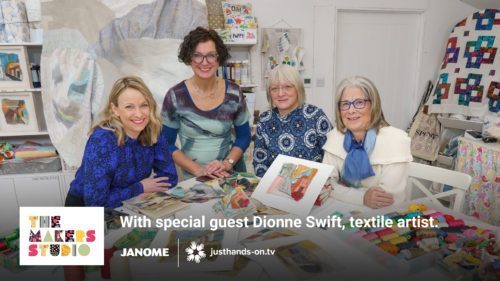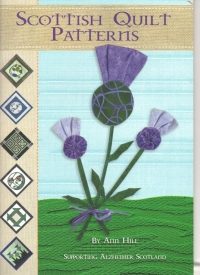About Dionne
Dionne paints with stitches to create dynamic, vibrantly coloured textiles. Her needle becomes her pen and thread her ink. The scale, emotion, and energy of her landscapes are inspirational.
Dionne is a graduate of Goldsmith’s College, London University. She has a Masters in Textiles from UCE. And she has been recognised by the industry for her incredible work, e.g. Shortlisted Finalist in the Fine Art Textiles Award at The Festival of Quilts 2020.
Now based between Yorkshire [UK] and Abruzzo [Italy], she exhibits and tutors internationally.
You can watch Dionne demonstrate how to use free motion embroidery to create a range of patterns, textures, tones, and shades in an episode of The Makers Studio series, brought to you by Janome and justhands-on.tv.
Signature Technique
Painting with stitches
Top Tips
- Use a vibrant mix of thread weights, colours, and styles to build up a more dynamic texture.
- A machine with an extra wide throat makes it easier to manipulate your piece.
- Cover your hoop with fabric to give it more grip. You need the fabric to stay drum like as you manoeuvre it.
- Drawing your subject first, with pencil on paper, can help improve your observation and knowledge of your subject – try not to work from a photograph.
- Practice by stitching your signature to get started. Your muscle memory will help you.
- Think of painting with stitches as an orchestra with the sewing machine, threads, fabric, hoop, and you (!) coming together to work as one.
- Don’t be afraid of the machine. After a few hours of speed sewing it becomes second nature.
- Try not to have a set image of the outcome. You are not stitching an exact replica. The result is where you get to. There is no wrong in there. Enjoy the journey.
Videos
Patterns
Posts
Alzheimer Scotland pattern book
Ann Hill is a tireless supporter and fundraiser for Alzheimer Scotland; one of her recent projects was to arrange to cover the Hampden Park Football stadium turf with quilts -which she did!!!! (and we suggested a really quick and easy pattern for you to make: click here to enjoy: ) Another of her projects has been to produce this book of patterns entitled 'Scottish Quilt Patterns - which contains a wide variety of projects and patterns for you to follow.
Have I done enough quilting?
Modern waddings do not need to be as densely quilted as vintage quilts used to be - that's why the older quilts are quilted approx every 1"; check with the paperwork/washing instructions that come with your wadding but usually today's option is approx 7-10" apart. Question: I have quilted each (log cabin) block on the diagonal to make squares with the quilting line (does that make sense?).
I want to make a cot quilt – where do I start?
You need to start with the fabric: some for the top, wadding for the middle and backing fabric; The wadding and backing fabric should be the same size as each other AND they should be larger than the top fabric, by approx 4" all the way round. Layer together with pins or tacking ready for quilting. see layer quilt and bind Click here: You need to quilt the sandwich either by hand or machine: if you plan to work by machine you have two options: free motion: Jennie has a couple of workshops on the website - the first is free motion embroidery - but don't be put off by the title - it will help
and then the second is about free motion quilting: or using the walking foot.: this is really easy to use as it is just another foot and just sews, but fitting it can be a bit of a trick, so here is some help:click here and then you can sew in straight lines or use simple wavy stitching as suggested by Valerie.

